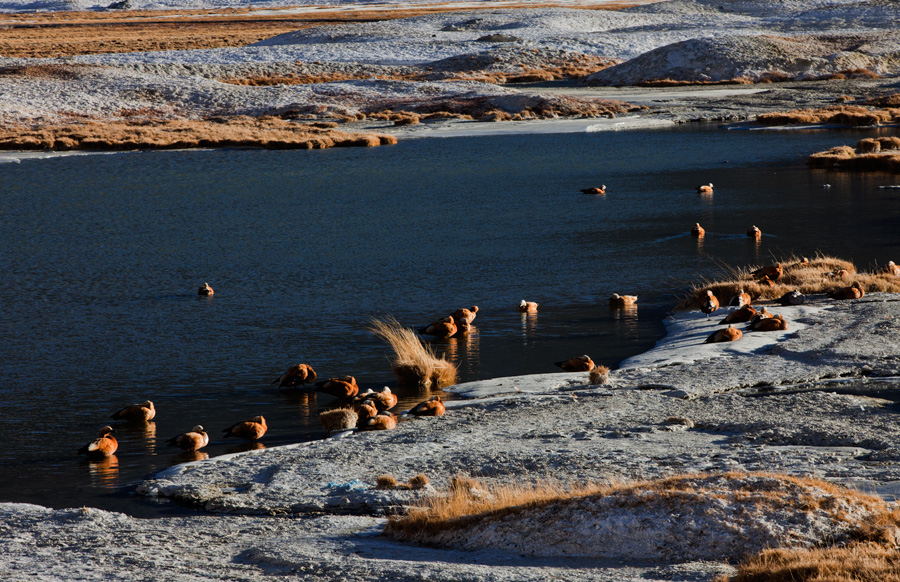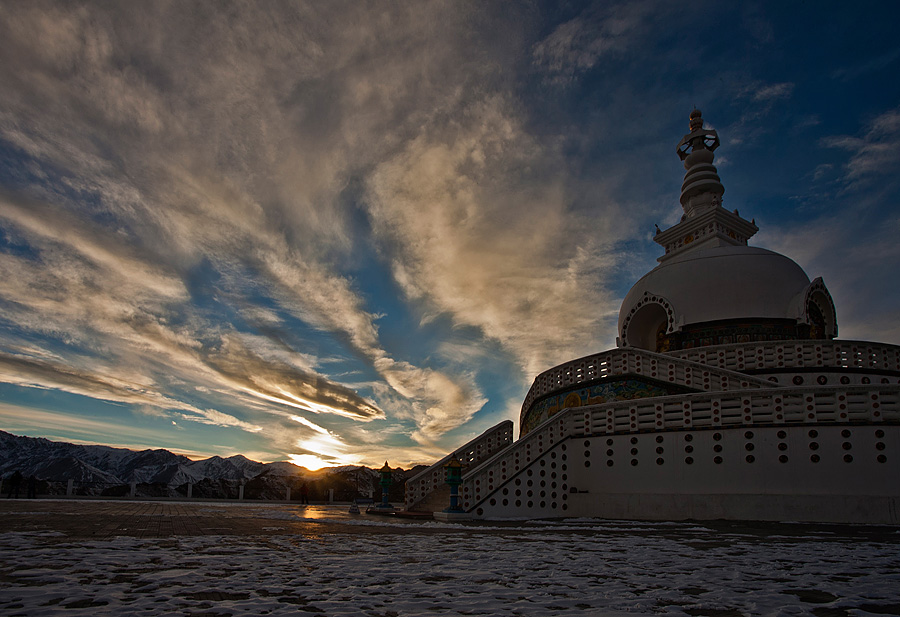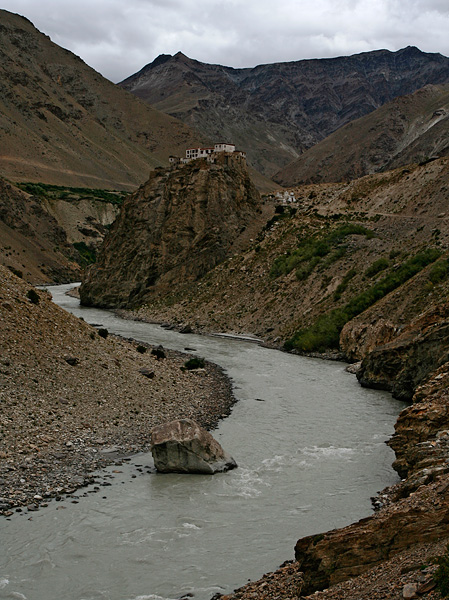Sometimes nature creates things that appear weird to us. Today’s photo is hot-springs of Ladakh in winter covered by an ice-shell!

We found these curious hot-springs during our wanderings in the high-altitude Chhangthang Plateau, Ladakh, during the winter months. Even when the outside temperature remains below zero and drops to -30 at night time, these geysers continue to spit boiling-hot water. Much of the water flows down as a stream, but a few droplets that fall away are instantly turned into snow. The result is this beautiful cone that forms a shell around the spring.
 We were able to hear the sound of gushing hot-water inside the ice-cone. The insides are even more beautiful with icicles hanging on the ice-wall and a sulphurous smoke rising from its belly. Beauty PLUS fascination!
We were able to hear the sound of gushing hot-water inside the ice-cone. The insides are even more beautiful with icicles hanging on the ice-wall and a sulphurous smoke rising from its belly. Beauty PLUS fascination!
Some birds take advantage of these hot-springs. We saw ducks enjoying the stream of warm waters made by these springs. Ruddy shelducks, which generally migrate to lower altitudes in winter, were enjoying staying back here in a small flock. The avian population in the area was unusually dense for winter months in Ladakh.
Shanti Stupa is a popular place for watching the sun set over the mountains surrounding Leh town. A sprinkle of snow on the ground and a colourful sky adds to the view from the stupa platform.

In the summer of 2008, I travelled extensively in Ladakh spending two memorable months in the mountain country. Then, I had quit my corporate job a few months ago and was enjoying my time seeing the country. I travelled on budget, taking public transport as much as possible and living in home-stays in the villages. At the end of my trip, I exited Ladakh by making a two day bus journey to Padum in Zanskar and then making the nine-day trek through the mountains that led me to Darcha in Himachal Pradesh. The duration of Padum to Darcha trek is reducing every year, with a new motor road in the making I maintained a journal for much part of the journey to Ladakh, including this trek. Here a detailed trek-log, much of it taken as-is from the journal.
Padum to Darcha Trek
The road to Darcha goes along Lungnak River, steadily climbing up until the river’s origin near Shingo-la Pass. We begin from Padum on an unmetalled road, under construction from the venerable Border Roads Organization. Some day, when this road is ready, the entire stretch of our trekking route will be replaced by a highway that will probably be just wide enough for a vehicle to pass. But that’s just how Himalayan Roads are. The trek-route will be defunct then, so there is a sense of urgency in doing it now.
It’s a smooth walk from Padum along the road till we reach Bardan, the next village on the way. There are a few streams breaking the path that disturb the monotony of walking on the road. At Bardan, a monastery dominates the village landscape, standing on a crag at the end of a smooth curve of the river. Beyond the monastery, the mountains plunge into a deep gorge carved by Lungnak River.

Bardan Monastery and Lungnak River
Just before the arriving at monastery, I see a tiny rodent that runs pasts me into its hiding in a wall built from rocks. I wait for it to come out, keeping my camera aimed at its hole. It sure does, carefully checking out for enemies from its safety. I take a few pictures, which later help me identify it as a Himalayan Pika. A few minutes of walking later, I encounter a white rumped swallow-like bird and a red-tailed bird, neither of which I am able to name.
 We were able to hear the sound of gushing hot-water inside the ice-cone. The insides are even more beautiful with icicles hanging on the ice-wall and a sulphurous smoke rising from its belly. Beauty PLUS fascination!
We were able to hear the sound of gushing hot-water inside the ice-cone. The insides are even more beautiful with icicles hanging on the ice-wall and a sulphurous smoke rising from its belly. Beauty PLUS fascination!

